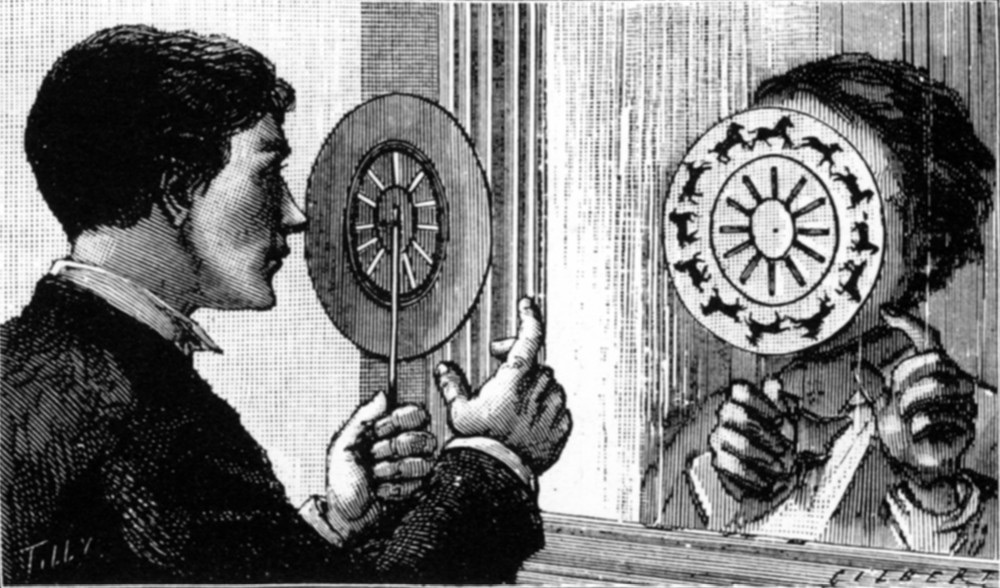Table of Contents
🎠 Also known as "philosophical toys," optical toys represent some of the earliest animation technologies available to the public. These devices exploited a phenomenon known as "apparent motion" to create the illusion of continuous motion from a series of static images.
Common Optical Toys
Magic Lantern
The magic lantern used light shined through transparent colored material to project images onto a surface. While not technically an animation device in its basic form, more advanced versions used movable glass slides to create simple animations. It also became the foundation for optical toys and moving pictures that projected their images on a surface.
Phénakisticope (1832)

Invented by Joseph Plateau, the phénakisticope consisted of a disc with slits and a succession of images. When the disc was spun and the viewer looked through the slits into a mirror, the succession of images appeared to merge into a single moving image—an early demonstration of apparent motion.
Zoetrope (1834)
The zoetrope operated on the same principle as the phénakisticope but removed the need for a mirror. Viewers looked through slits in a rotating cylinder at images arranged around the inside wall. This made the viewing experience more accessible and could be enjoyed by multiple viewers simultaneously.
Kinematoscope (1861)
The kinematoscope had viewers look through slits at images on the blades of a rotating paddle, which was operated by a hand crank. This variation helped to refine the timing mechanics that would later be important for film projection.
Praxinoscope (1877)
Émile Reynaud improved on the zoetrope by using a set of mirrors to reflect the image, eliminating the need for slits. This innovation significantly brightened the image and reduced the flickering effect, creating a smoother viewing experience.
Zoopraxiscope (1879)
Eadweard Muybridge's zoopraxiscope combined the principles of the magic lantern and the phénakisticope to project a succession of images from a spinning glass disc. This device represents a significant step toward modern film projection.
Muybridge used the zoopraxiscope to display his motion studies of animals and humans. Because the zoopraxiscope caused image distortion when projected, the photographs had to be recreated as illustrations that compensated for this foreshortening effect.
Educational Value
I first encountered optical toys through a colleague who had a collection of reproductions used for teaching film history. Watching students interact with these devices creates a tangible connection to the technological principles underlying cinema. The hands-on experience of manipulating a zoetrope or praxinoscope helps students understand the persistence of vision phenomenon in a way that digital demonstrations cannot replicate.
These seemingly simple toys demonstrate the fundamental principles that would eventually lead to cinema: the breaking down of motion into discrete frames and the rapid presentation of those frames to create the illusion of continuous movement.
This note is part of a series exploring the pre-history of cinema.